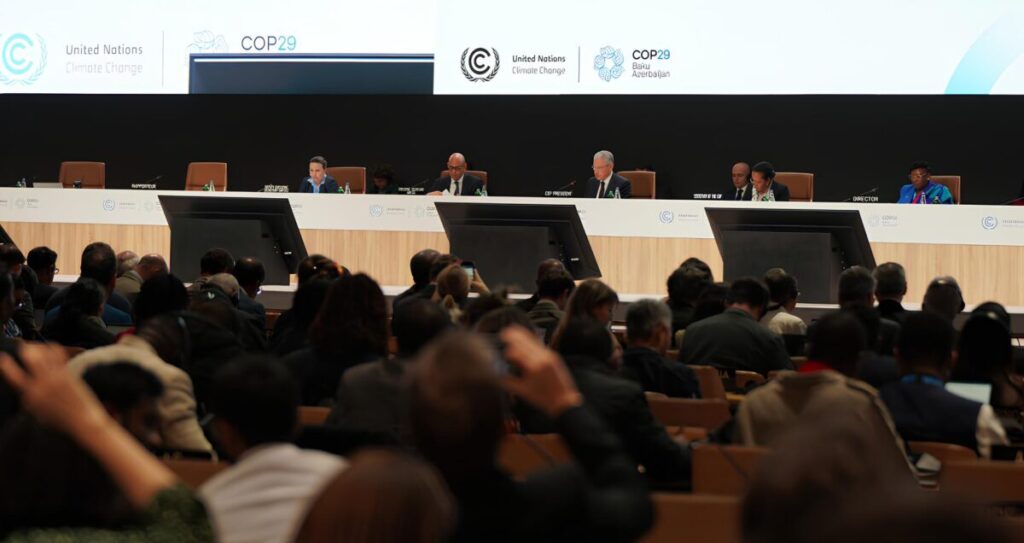# 1 Decarbonization and Carbon Markets
Our special envoy to COP29, 22-med outlines the main points of the discussions that took place around the Mediterranean. Throughout December, we will decode the major issues and key outcomes of the 29th UN Climate Summit through three themes: biodiversity, building transition, decarbonization.
The 29th COP has opened a new chapter in the fight against climate change. At the heart of the discussions, carbon markets have finally found a regulatory framework, after a decade of complex negotiations. The principle of carbon markets is based on an incentive mechanism: each project that reduces or captures a ton of CO2 generates a tradable carbon credit. These credits can be acquired by countries or companies seeking to meet their climate goals.
COP29 marked a major advancement by finalizing the standards of Article 6 of the Paris Agreement. Two complementary systems were adopted: a centralized market under the auspices of the United Nations, and a bilateral approach, allowing countries to exchange credits directly. This flexibility is expected to stimulate investments while ensuring increased transparency through a shared central registry.
An Economic Lever for the Climate
According to the IETA (International Emissions Trading Association), carbon markets could mobilize $250 billion per year by 2030. This financial windfall could offset up to 5 billion tons of CO2 annually while financing climate projects in developing countries. Baku also emphasized the need to support emerging economies by providing them with infrastructure and tools to access these new markets.
Critical Challenges: Ensuring Credibility and Effectiveness
Despite these advancements, obstacles remain. The risk of greenwashing is ever-present: without a strict framework, companies could use these credits to improve their image without actually reducing their emissions.
Moreover, the issue of credit equivalence remains problematic. A credit from a reforestation project, for example, does not hold the same value as a credit linked to direct fossil carbon capture, as trees are vulnerable to fires or other disasters.
Finally, the distribution of benefits between rich and poor countries remains a point of tension. While COP29 promised support for less favored countries, the necessary funding amounts to trillions of dollars, far beyond current commitments.
Towards an Inclusive Transition: Innovation for SMEs
One of the flagship initiatives of COP29 was the launch of a platform dedicated to SMEs. These businesses, often overlooked in global climate strategies, will now play a key role in the ecological transition. The "climate-proof" campaign aims to help these organizations adapt, but also to actively shape the new climate standards. Already, over 65 million SMEs are participating in this initiative, demonstrating the enthusiasm of the private sector to engage in a sustainable transition.
A Unique Opportunity for Developing Countries
For Southern nations, carbon markets represent a historic chance to mobilize resources on a large scale. The funds generated could finance climate change adaptation projects, such as protecting coastal infrastructure, or mitigate losses and damages already incurred. However, these mechanisms must be accompanied by simplified access to funding and enhanced technical support to ensure their effectiveness.
A Fragile but Promising Victory
The COP29 has laid the groundwork for a more transparent and inclusive carbon market system, offering new prospects for global decarbonization. However, the success of these mechanisms will depend on the rigorous implementation of the adopted standards, as well as the political will to overcome divisions between developed and developing countries.
At the dawn of a decisive decade for the climate, it is essential that these tools do not become loopholes, but real catalysts for transformation. To achieve this, the international community must maintain its commitment to finance and support the necessary transitions. It remains that these markets are not an end in themselves, but a means among others to achieve a viable and equitable planet for all.

Cover photo ©kp yamu Jayanath Pixabay
